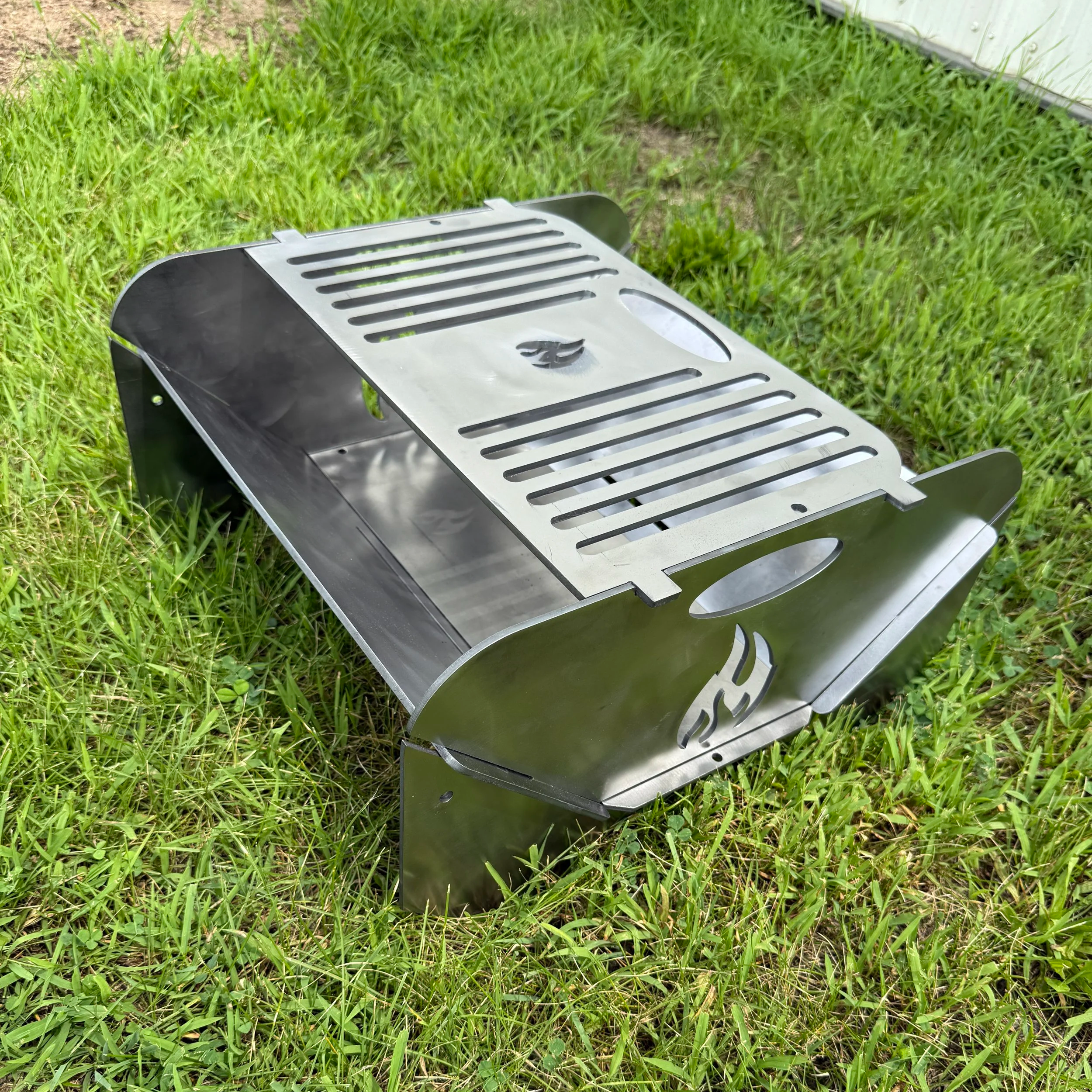Removing Mill Scale
We ensure our cooking surfaces are cleaned of mill scale, allowing you to experience the full advantages of using carbon steel in your cooking. Mill scale is not food safe.
The Benefits of Cooking on Carbon Steel
(Why Removing Mill Scale is Essential)
When it comes to cookware, carbon steel has earned a loyal following among professional chefs and home cooks alike. Known for its versatility, heat retention, and durability, carbon steel offers a host of benefits that make it a top choice for cooking everything from delicate fish to hearty steaks.
However, before using carbon steel for cooking, it's important to address one key step: removing the mill scale.
Let’s dive into why cooking on carbon steel is so beneficial and why it’s essential to remove mill scale before firing up your new pan or grill.
The Benefits of Cooking on Carbon Steel
Excellent Heat Retention and Distribution
Carbon steel is known for its ability to retain and distribute heat evenly. This makes it ideal for achieving a perfect sear on meats or evenly cooking vegetables. Whether you’re cooking at high heat or using a low simmer, carbon steel cookware provides precise temperature control, allowing you to master your culinary techniques.
Versatility in Cooking
Carbon steel pans are incredibly versatile. You can use them on nearly any heat source—whether it’s a stovetop, oven, grill, or even open fire. From frying and sautéing to baking and broiling, carbon steel can handle it all. Additionally, carbon steel pans are typically thinner and lighter than cast iron, making them easier to handle in the kitchen.
Natural Nonstick Surface
Over time, carbon steel develops a natural nonstick surface through a process called seasoning. As you cook with oils and fats, the pan builds up a layer of polymerized fat, which makes cooking and cleanup a breeze. Properly seasoned carbon steel cookware rivals nonstick pans but without the synthetic coatings that can degrade over time.
Durability and Longevity
Carbon steel is highly durable and can last a lifetime with proper care. Unlike nonstick or ceramic-coated cookware, carbon steel can handle metal utensils, high temperatures, and daily wear and tear without flinching. Many carbon steel pans become family heirlooms, passed down through generations.
The Importance of Removing Mill Scale Before Cooking
When you purchase new carbon steel cookware or grills, you may notice a layer of mill scale on the surface. Mill scale is a byproduct of the manufacturing process, typically a dark, flaky coating that forms on the steel as it cools after being hot-rolled. While mill scale is harmless in construction and manufacturing contexts, it’s not something you want to cook on. Here’s why removing mill scale is essential.
Mill Scale is Not Food-Safe
Mill scale consists of iron oxide and impurities that can flake off into your food if left untreated. It’s not food-safe, and cooking directly on it can result in metallic tastes and potential health risks. Removing the mill scale ensures that your food is cooked on a clean, safe surface.
Achieving Proper Seasoning
To unlock the true potential of carbon steel, the surface needs to be seasoned properly. Mill scale prevents oils from adhering to the surface, hindering the seasoning process. Removing the mill scale allows you to begin seasoning the pan correctly, creating that coveted natural nonstick layer that makes cooking so enjoyable.
Enhances the Longevity of the Pan
Cooking on mill scale can lead to uneven seasoning, rust, and general degradation of the cookware. By taking the time to remove the mill scale, you’re setting your pan up for a long, productive life in your kitchen.
Better Cooking Results
When you remove mill scale, you ensure a smooth surface that cooks evenly. Mill scale can cause hot spots or uneven heat distribution, which can result in poorly cooked meals. A clean, mill scale-free surface provides optimal heat conductivity and makes your cooking experience smoother and more efficient.
How to Remove Mill Scale
Removing mill scale from carbon steel cookware or grill grates isn’t a difficult task, but it’s essential to do it right. Here are a few methods you can use:
Vinegar Bath: Soak the cookware in a vinegar and water solution for a few hours. This will help dissolve the mill scale. After soaking, scrub the surface with a scouring pad, rinse thoroughly, and dry.
Sanding or Grinding: If the vinegar bath doesn’t remove all of the mill scale, you can use fine-grit sandpaper or a wire brush attachment on a drill or grinder to carefully remove the remaining scale.
Soap and Water: After removing the mill scale, wash the cookware with warm soapy water to remove any remaining particles. Make sure to dry it completely before seasoning.
Final Thoughts
Carbon steel cookware offers numerous advantages for home cooks and professionals alike. Its durability, versatility, and natural nonstick surface make it a go-to for many. However, before you start cooking, it’s essential to remove the mill scale to ensure a safe, efficient, and enjoyable cooking experience. With the mill scale gone, you can season your pan properly and enjoy the full benefits of cooking on carbon steel for years to come.
P.S. If you like this article, you might also wanna check out our article on How to Clean Stainless Steel Grill Grates.





